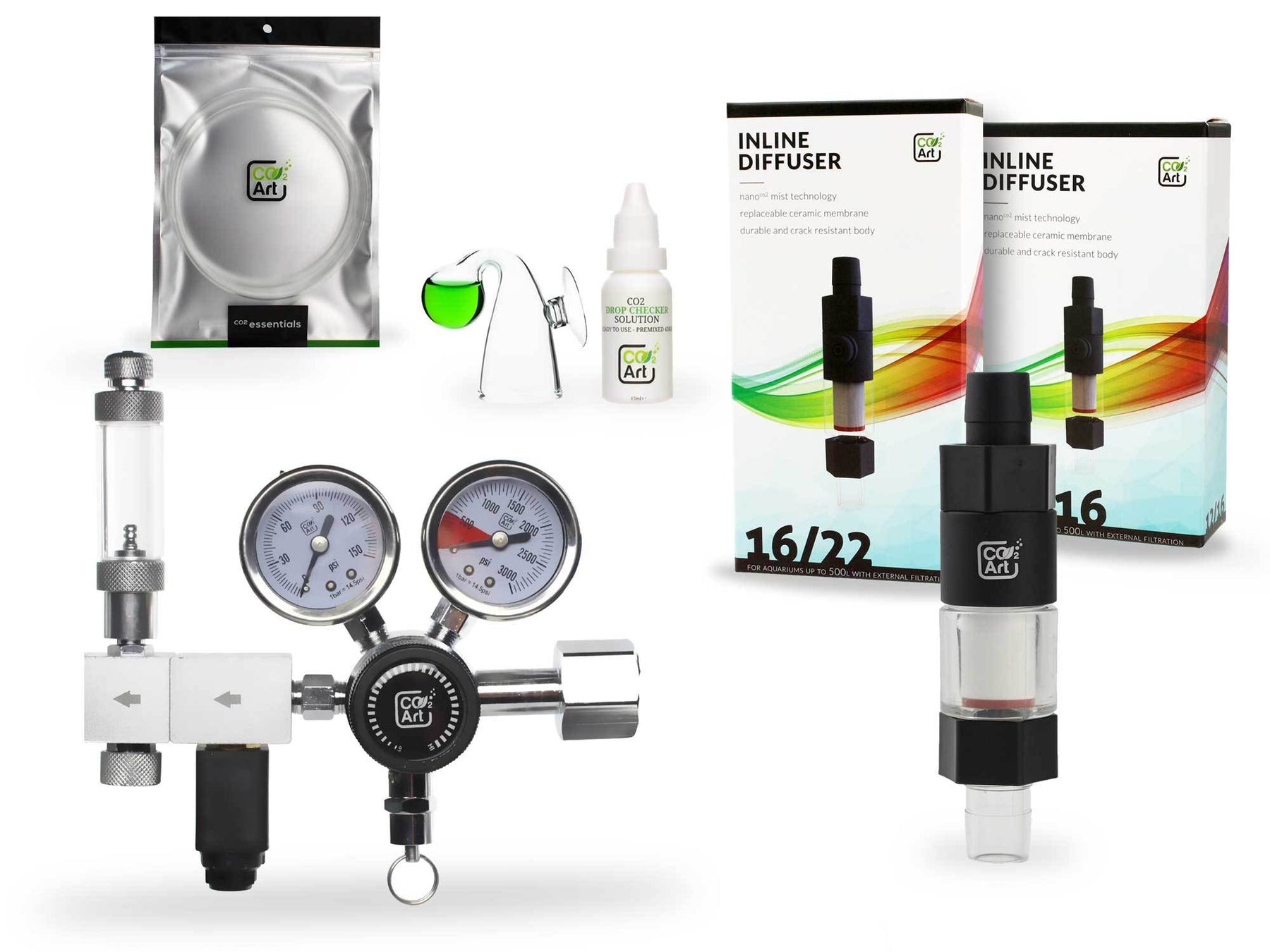Measuring CO2 in your aquarium with a drop checker tips & tricks
Regularly testing your aquarium water is key to maintaining a healthy and balanced environment—for both your aquatic plants and your fish. While many water parameters can be checked periodically, monitoring CO2 levels is something that should be done daily in a planted tank.
Luckily, there's a simple and reliable method that makes this easy: the CO2 drop checker. This small, in-tank visual indicator is a must-have for anyone running a high-tech setup with CO2 injection. It helps you keep CO2 levels in check at a glance—no guesswork, no stress.
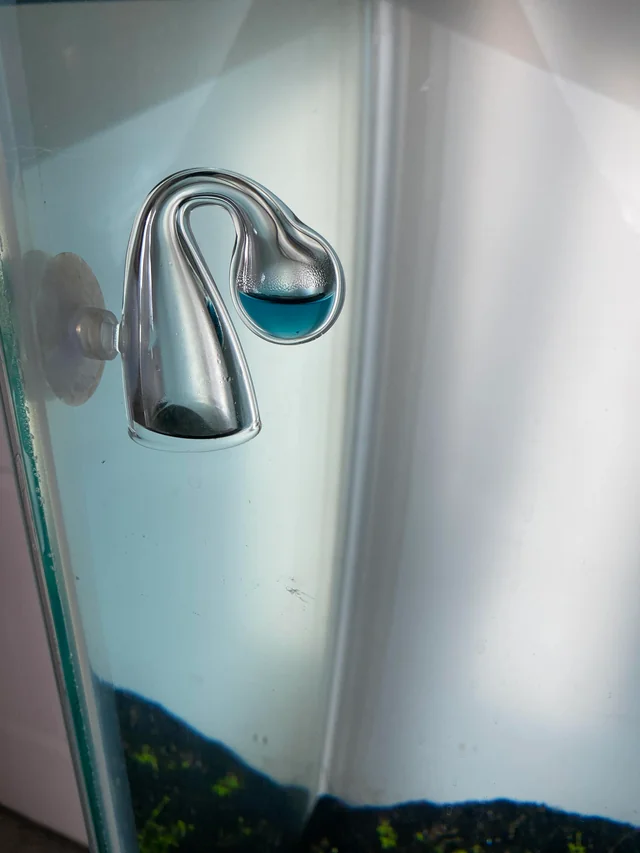
In this article, we'll explain why the CO2 drop checker is so useful, how it works, and how to properly read and interpret its color changes to ensure your aquarium stays in perfect balance.
What is a drop checker?
The concept is simple—a CO2 drop checker is a small glass chamber with a suction cup for easy attachment inside the aquarium. It typically comes with a special CO2 indicator solution (reagent) included in the kit. In other words, with the CO2 checker aquarium can be controlled in terms of pH/CO2 levels, which is great as it doesn't need performing actual test, e.g. with strips.
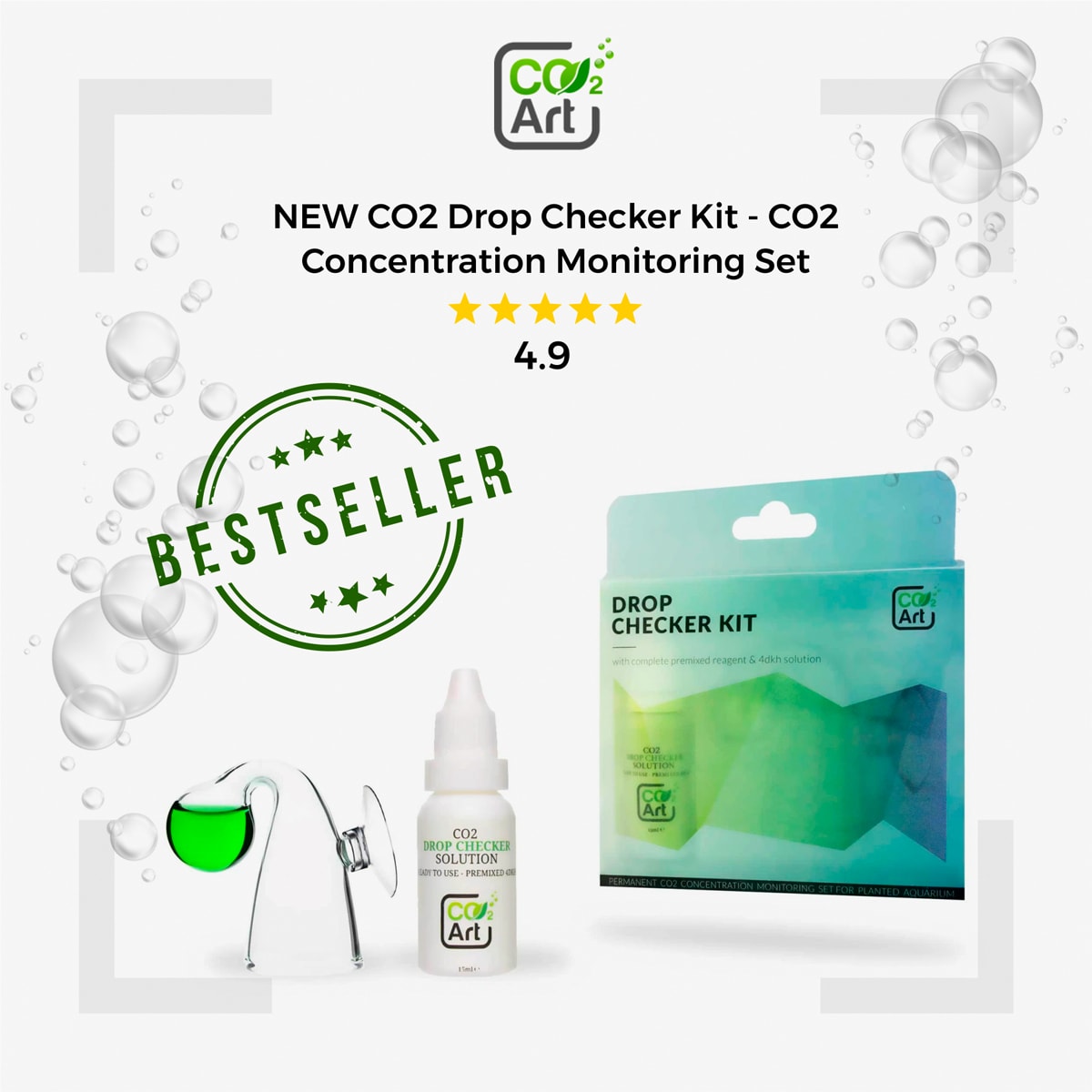
How to measure CO2 in aquarium?
When set up, the reagent is held inside the chamber along with a small pocket of air, and the entire unit is submerged in the tank. This setup allows the solution to react to the CO2 levels in the surrounding water. Based on the color change of the reagent, the drop checker provides a clear visual indication of whether the CO2 levels are within a safe and optimal range for both your plants and aquatic life.
Saying? How?
Actually showing :) The reagent changes its color depending on the amount of CO2 dissolved in aquarium water. If there is too little CO2- the drop checker turns blue. When it's green colour- the CO2 concentration is perfect and your aquatic plants absorb the sufficient amount of gas. If the drop checker turns yellow- this means the CO2 concentration in the tank is too high, which can be dangerous to aquarium fish.

How it works?
The drop checker solution—typically containing bromothymol blue—reacts to pH change, which is closely linked to CO2 levels in the water. When CO2 levels rise, the pH drops; when CO2 levels fall, the pH rises.
In a planted aquarium, the goal is to reach a balanced CO2 concentration—high enough to meet the needs of aquatic plants, but still safe for fish and invertebrates. The drop checker helps by visually indicating when you've hit that sweet spot.
We generally aim to achieve 30 ppm which is considered as an ideal CO2 concentration for tanks with high lighting. At this level, plant growth is supported without risking harm to livestock.
Where to place the drop checker?
Another important factor of having the most accurate feedback is the CO2 drop checker placement. Many hobbyists forget that the drop checker should reflect the CO2 concentration in the whole aquarium, not only where the diffuser produces bubbles. Therefore, we always advise placing the diffuser near the filter outlet (when the in-tank diffuser is used) and the drop checker opposite to the diffuser. This way, the bubbles produced by the diffuser can be held by the water flow and reach every corner of the tank. And the drop checker can show the real CO2 concentration if the reagent is placed far from the CO2 source. Makes sense?
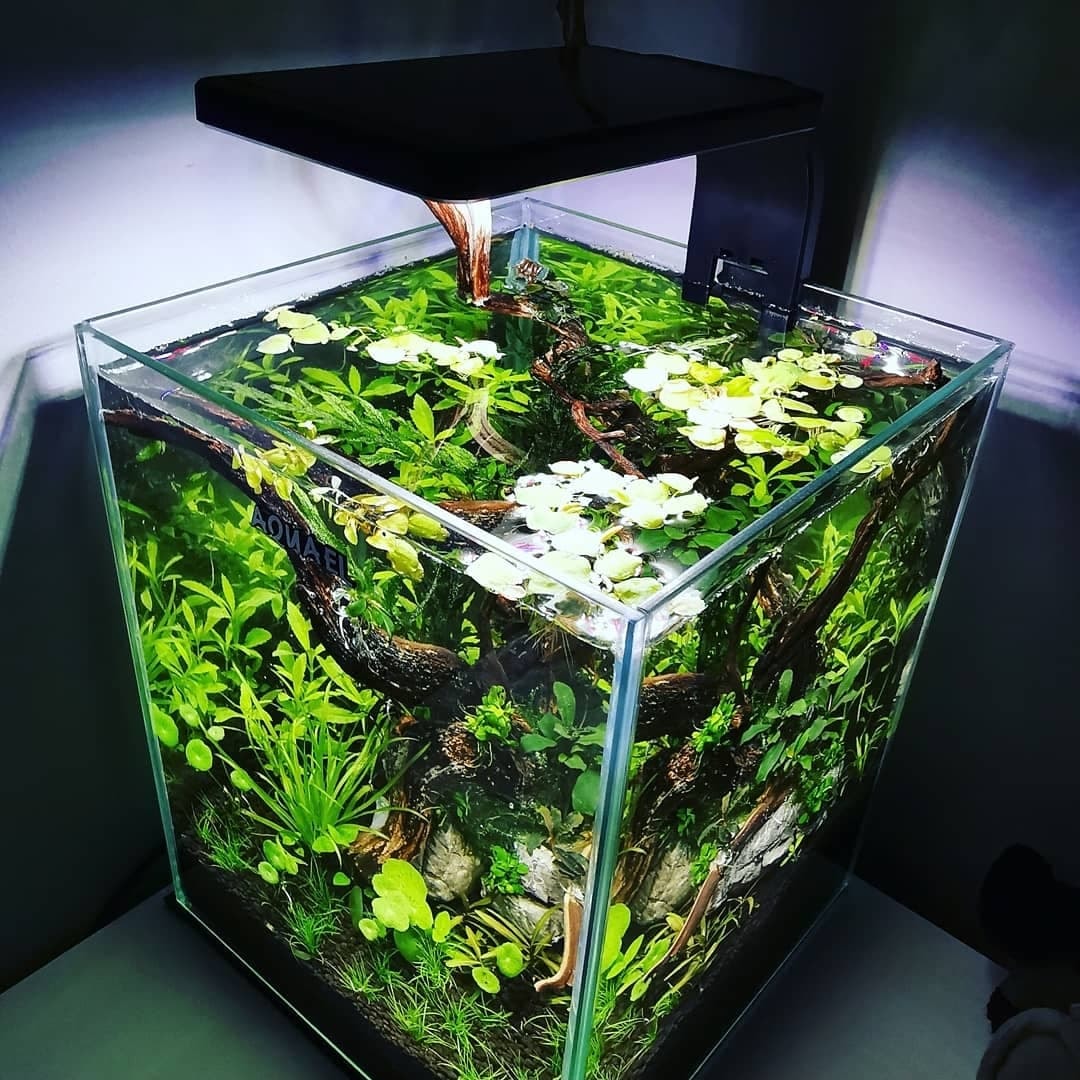
How to Set the Bubble Rate for the First Time
The key? Go slow and be patient.
When you're setting your CO2 bubble rate for the first time, it's important to remember that the drop checker doesn’t respond instantly. It reacts gradually to changes in CO2 levels for very good reasons.
In the morning, when you first turn on your CO2 system, the color of the drop checker is actually reflecting the CO2 concentration from an hour or two earlier—not the current level. As the day progresses and the gas continues to dissolve into the water, the tank gradually reaches a stable CO2 concentration, balancing between the injection rate, plant consumption, and natural off-gassing mechanism.
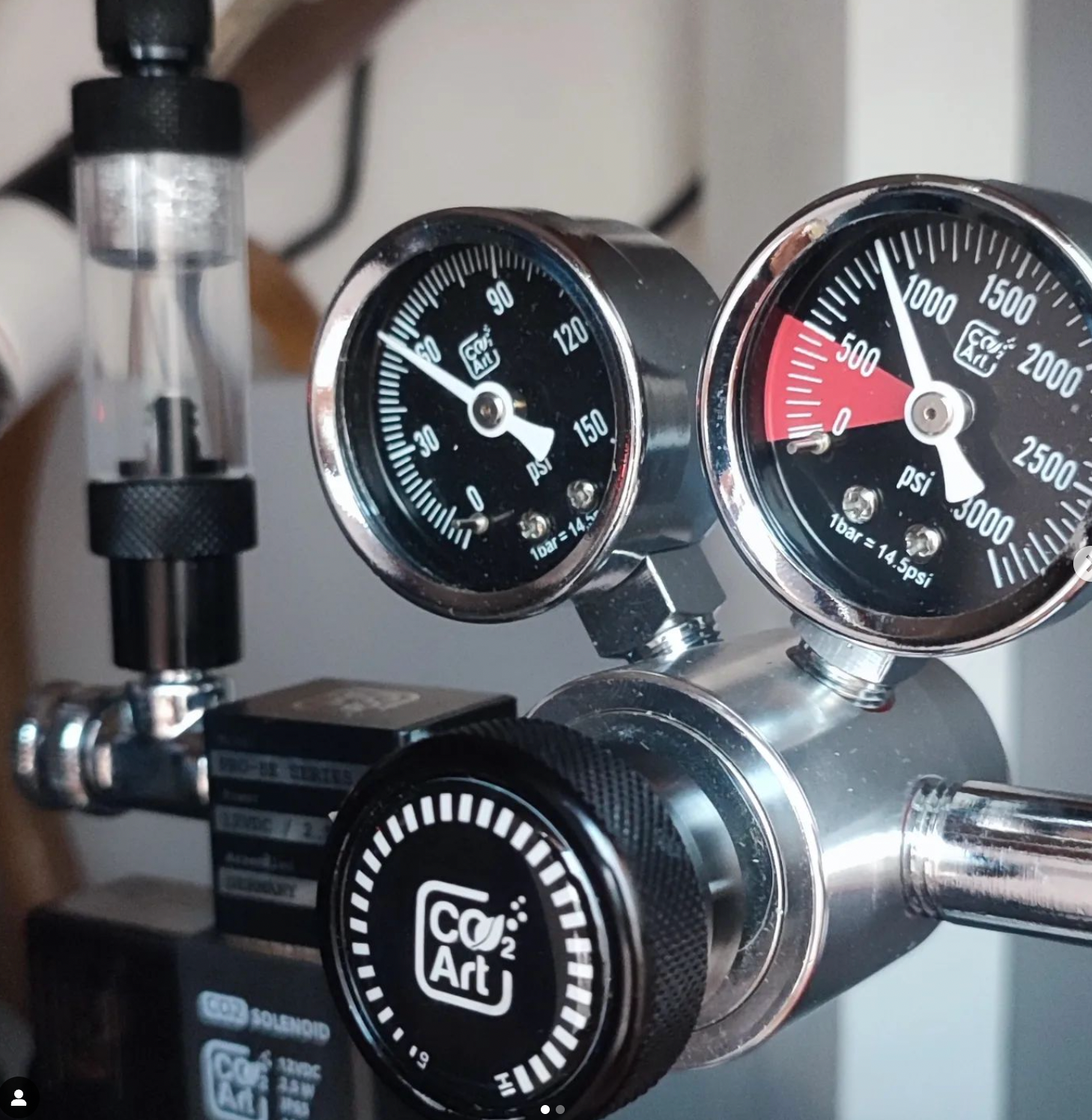
Only after that—typically 4 to 5 hours in—does the CO2 in the tank, the air bubble inside the drop checker, and the reagent inside it reach equilibrium. That’s when the drop checker gives a reliable indication of the true CO2 level.
If you adjust the bubble rate too soon because the color “isn’t changing fast enough,” you risk over-injecting carbon dioxide, which could harm your fish and cause the drop checker to turn bright yellow later in the day. To avoid this, it’s best to start with a conservative, “safe” bubble rate, and only make adjustments after allowing enough time for things to stabilize.
Recommended Starting Bubble Rates VS Tank Size:
-
40 to 60 gallons: 1 bubble per second
-
20 to 40 gallons: 1 bubble every 2 seconds
-
10 to 20 gallons: 1 bubble every 5 seconds
From there, observe the drop checker over several hours and fine-tune if needed.
Patience pays off: with careful setup, you'll achieve optimal CO2 levels for healthy growth of your plants and happy fish!
What if my drop checker remains blue?
OK, now it's time to explain the CO2 indicator color guide. Let's start with blue :) If your drop checker remains blue, there might be a few potential causes of this situation:
1. The diffuser is placed far from the filter outtake, so the bubbles can't be "moved" around the planted tank by the water current
2. The bubble rate is too low resulting in insufficient CO2 concentration in the planted aquarium
3. There might be a leak somewhere on your CO2 system, e.g. the bubble counter is not screwed in tightly and the gas escapes the system before entering the aquarium
4.The reagent in the drop checker is old and doesn't give accurate readings.
So if you can't achieve the green colour in the drop checker, all of the above should be checked!
What if my drop checker is yellow?
Excessive CO2 in your aquarium can be harmful—and even fatal—for your livestock, especially if you're keeping sensitive fish or shrimp. If you notice signs of distress, it's important to respond immediately and neutralize this lethal build up.
Here are some common causes of sudden CO2 spikes:
1. Excessive Bubble Rate: An injection rate that’s too high can quickly lead to unsafe CO₂ concentrations.
2. Clogged CO2 Diffuser: Over time, diffuser ceramics can become blocked. If a sudden burst of CO2 pushes through the clog, it can cause a rapid and dangerous swing in pH levels. To prevent this, we strongly recommend cleaning your diffuser every 3–4 weeks.
3. Contamination in the Regulator’s Second Stage: Although rare, debris from non-food-grade CO2 cylinders (like those used for welding) can enter the regulator and block the second stage, disrupting flow control. This is why we always recommend using food-grade CO2 cylinders and avoiding industrial alternatives.
What to do in such cases? Act fast! Performing a significant water change and stopping the CO2 supply is crucial.
What if I don't want to use a drop checker?
You can use a CO2 chart aquarium guide to estimate the CO2 levels based on pH and KH levels. This is a great alternative for aquarists who prefer not to use the CO2 drop checker and rely only on the CO2 drop checker color. By measuring your water's pH and KH and referencing the chart, you can still monitor and adjust CO2 levels accurately. It's a practical method that provides a good estimate and helps you maintain a healthy balance for both plants and fish. Generally, using a CO2 test kit aquarium hobbyists can measure carbon dioxide levels equally without relying on visual indicators, however, this requires a bit more engagement.
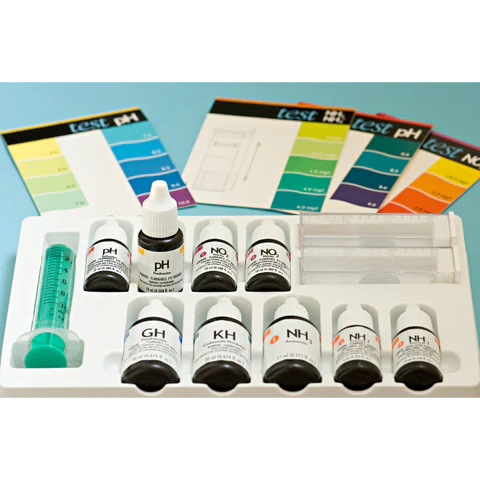
Final thoughts
Remember! CO2 supplementation is not everything! Adequate fertilization, balanced lighting, regular water changes and more take part in the overall health of your planted tank. Even the most undemanding plant won't flourish without good lighting; contrary even the most well-lit carpeting plants won't thrive without sufficient carbon dioxide dosing.
Understanding the exact science that stands beyond the planted tank success is not that difficult and having a read in depth makes a huge difference! Check out how your plants grow with the balanced lighting, ferts and CO2! And the drop checker will help you to keep everything under control!
Meet our bestseller! The Pro-Elite Series Complete Aquarium CO2 System with New Inline CO2 Diffuser!
